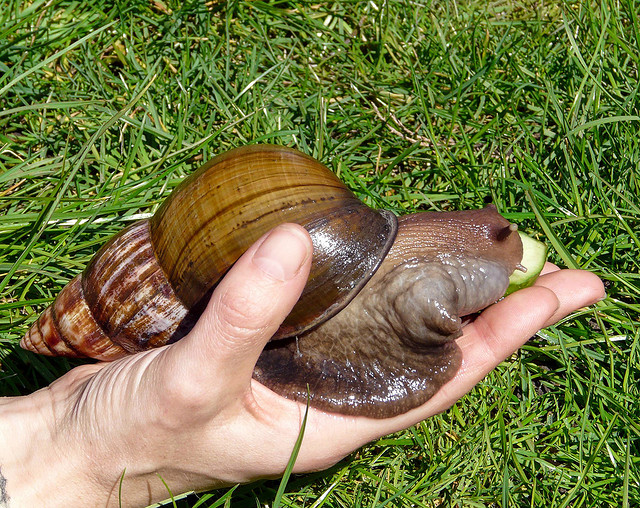 Diversionary maneuvers are promising in the fight against the snail plague. And yellow mustard. Garden cress. Tagetes, sown as a two meter wide strip around the bed. the snails eat their fill and leave the cultivated plants alone.
Diversionary maneuvers are promising in the fight against the snail plague. And yellow mustard. Garden cress. Tagetes, sown as a two meter wide strip around the bed. the snails eat their fill and leave the cultivated plants alone.
It's even more effective, the snails with their favorite dishes like potato slices, Orange bowls, Bier, Baiting dandelion leaves and then collecting them two to three times at night. Bait is only put out for a short time. so that snails from the neighborhood are not attracted. The best time is just after a warm rain or then, when the beds have just been hoed through. Mulch can become the breeding ground for entire generations of snails. Nevertheless, it does not have to be dispensed with. dried, crushed nettle. Tomato and Comfrey Leaves. Farnkrautwedel. Bark mulch and coarse straw do not like slugs. On the other hand, they love lawn clippings and damp leaves. The mulch layer should be too thin, to provide shelter, and be torn open for a few days in early winter, so that the eggs are destroyed. Good snail eaters are hedgehogs. blackbirds. Stare. nuthatch. Singdrosseln. shrews.
moles. frogs and toads, as well as the larvae of fireflies and fireflies. Therefore, you should provide them with nesting places and food in the garden. When the beds are harvested, you can release them for chickens and ducks: They get the last snails and their eggs out of the ground.
snail fences and traps
Snail fences are well suited, to protect propagation beds with the particularly tender young plants. You can buy them ready made in different lengths (garden supplies).
Wood chips create an effective barrier around the bed, for the animals do not like to cross the rough material. This protection needs more often (with. B. after rain) to be renewed.
Wooden planks over a pit, filled with mulch: Snails and many other pests collect in the simple trap.
The pit must be emptied regularly.
roofing felt strips, which are folded outwards at the top edge, are an inexpensive and effective snail fence.
Algae lime, mixed to a pulp and distributed around the individual plants, reliably keeps snails at bay and supplies the plant with nutrients.